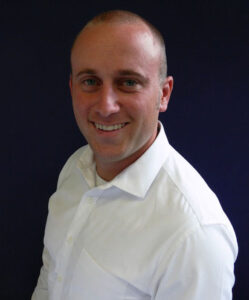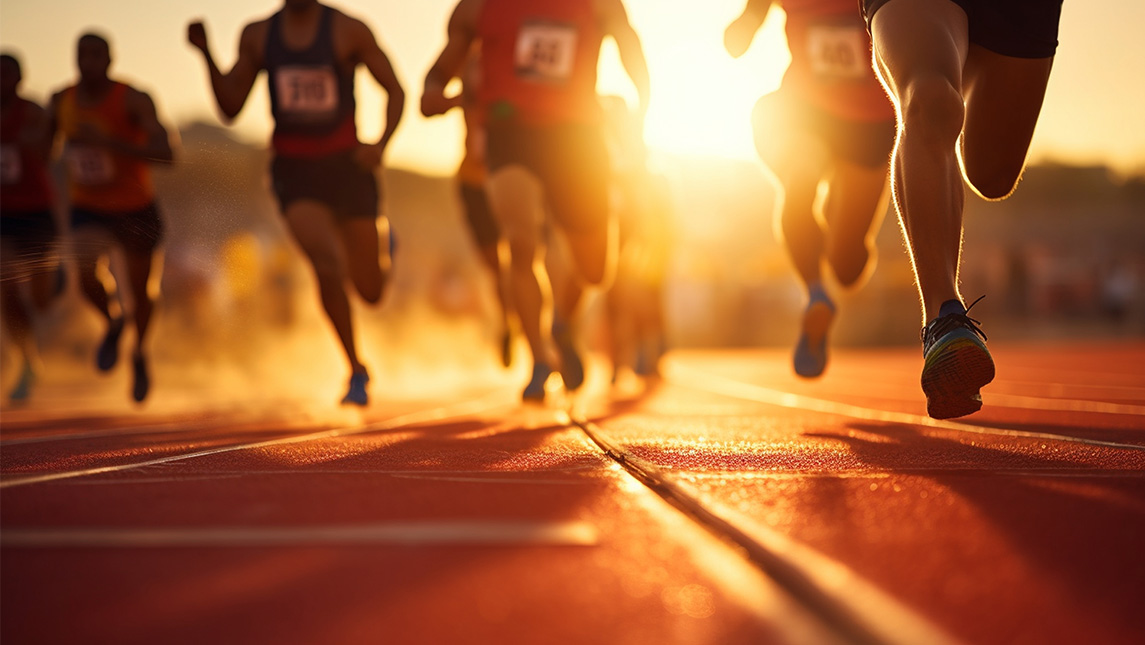The journey to becoming a professional athlete may start with bus rides to neighboring schools to away games, then – as their career progresses – to other states, across the country, and even around the world. Like all world travelers, they feel the stress of going to different time zones.
Dr. William Adams, an adjunct assistant professor of kinesiology at UNC Greensboro, is the Associate Director of Sports Medicine Research with the U.S. Olympic and Paralympic Committee (USOPC). He recently co-authored an invited commentary, alerting scientists to the need for more research into jet lag treatments, specifically for athletes with visual impairments.
“How can we develop strategies to use in and around trans-meridian travel?” asks Adams. “How can we optimize or minimize the extent of disruption that occurs with time zone travel?”
A Better Night’s Sleep
As associate director of Sports Medicine Research, Adams helps Olympians and Paralympians create strategies to optimize their health, wellness, and performance to help prevent anything that could derail their path to the podium. “If they’re injured or sick, and they don’t compete well at the trials, they’re not likely to be named to the Olympic or the Paralympic team,” says Adams. “There’s huge implications of not being prepared to compete at an optimal level.”

He works with a team of data scientists, physician assistants, physical and massage therapists, athletic trainers, physicians, chiropractors, dietitians, and other experts in mental health, and performance.
“Our psychological services providers work with athletes having problems with sleep or wanting to optimize sleep,” says Adams. “In discussions with one of our providers, she raised the question of how we can develop an effective sleep program for our athletes with visual impairments.”
An invited commentary, as opposed to an original research study, can draw more from what has been published in existing literature, expert opinion, and personal and anecdotal experiences. Adams and his team published theirs in “International Journal of Sport Physiology and Performance,” to consolidate current recommendations and get them into the hands of the practitioners that would be serving these athletes.
They hope that by publishing this commentary, practitioners will have access to practical guidance for assisting their athletes with entrainment, the process of synchronizing the body with the new time zone.
Jet lag is named for the stress of long-distance travel on the circadian rhythm, which is the body’s process of waking up, staying awake, then growing tired and falling asleep over a 24-hour cycle. A one- or two-hour time zone difference may not significantly throw off the circadian rhythm, but traveling across three or more time zones is more likely to cause fatigue, a lack of concentration, stomach problems, or mood swings.
This summer’s Olympic and Paralympic Games are in Paris, France, a difference of six to nine hours from the U.S. mainland. It’s why Adams is considering jet lag when making sure athletes are in peak form for their competitions. “Athletes at this level are traveling internationally and oftentimes across a large number of time zones that we know affect performance,” says Adams.
Changing with the times
The proteins that control the circadian rhythm are activated by light entering the eyes, so it aligns with the rising and setting of the sun. It’s why someone may struggle to fall asleep if they stare at their phone or TV late right before going to bed; the light from the screen sends a message to their brain to stay awake.
Some people use light therapy, exposing themselves to artificial light to kickstart their circadian rhythm’s new sleep-wake schedule. That’s a common tactic for sighted travelers, but it may not help a person with a visual impairment so severe where they can’t perceive any light at all.
“The individuals that meet that classification – not having intact eyes or the ability to perceive light at all – will face larger issues outside athletics,” says Adams, “Because of how the absence of light perception affects one’s circadian rhythm. Athletes that have a visual impairment but still have visual acuity may be able to benefit from the use of light therapy in managing jet lag.”
The invited commentary mentions other entrainment techniques, including moving bedtime and mealtimes gradually over several days or taking supplements like melatonin to help with sleep. Adams says pharmaceutical solutions present a unique issue for professional athletes – making sure they do not run afoul of current anti-doping rules.
Adams’ department with the USOPC has formed a working group to build sleep tools for athletes. Their paper is one of those ways to move that needle and help them move forward.
“It’s not just about our athletes, our Olympians, and Paralympians,” Adams says. “It’s not just about sports medicine and sports science. It’s asking how we can be more inclusive in our approach and to have a broader impact.”
Story by Janet Imrick, University Communications
Images from AdobeStock and courtesy of Dr. William Adams




